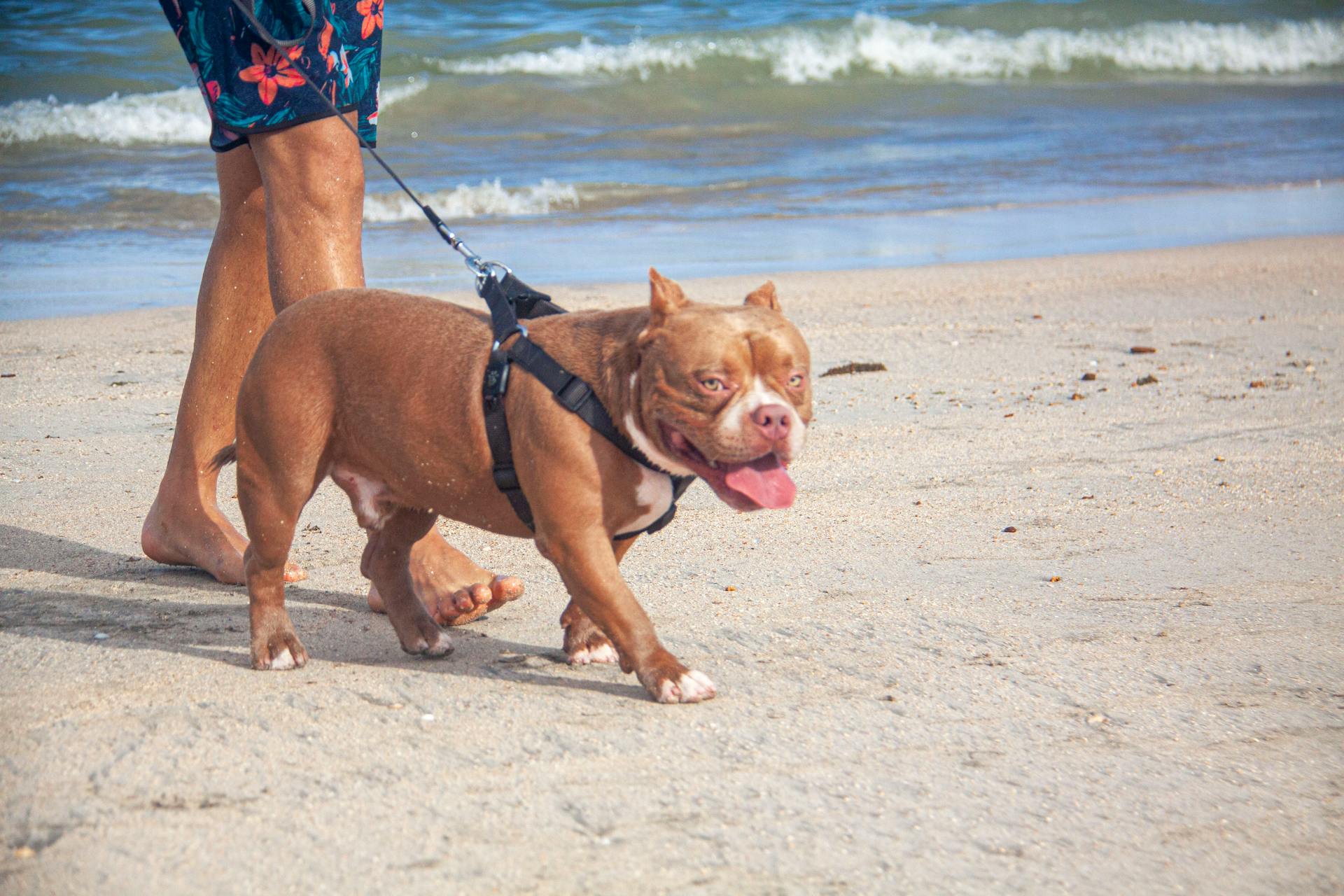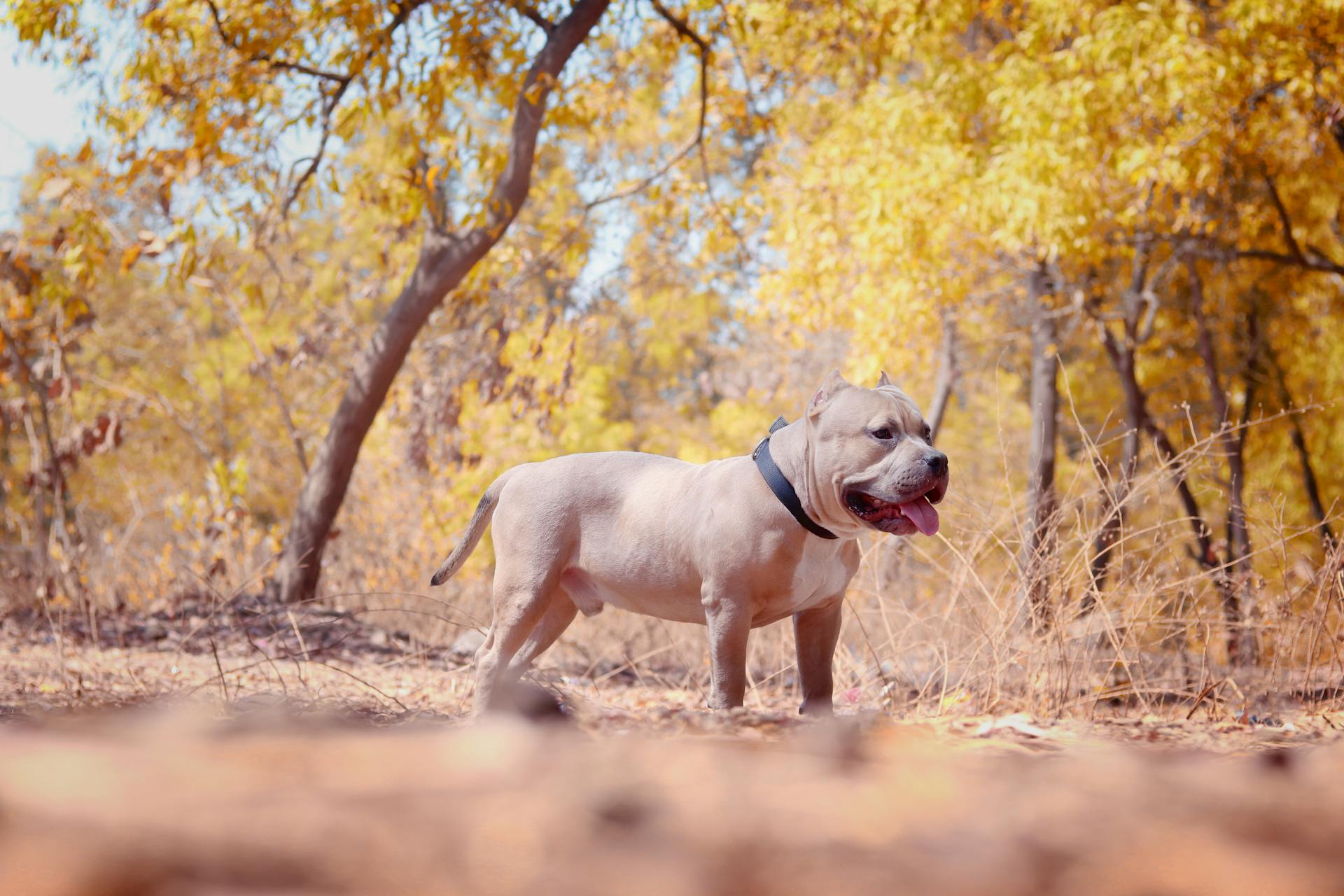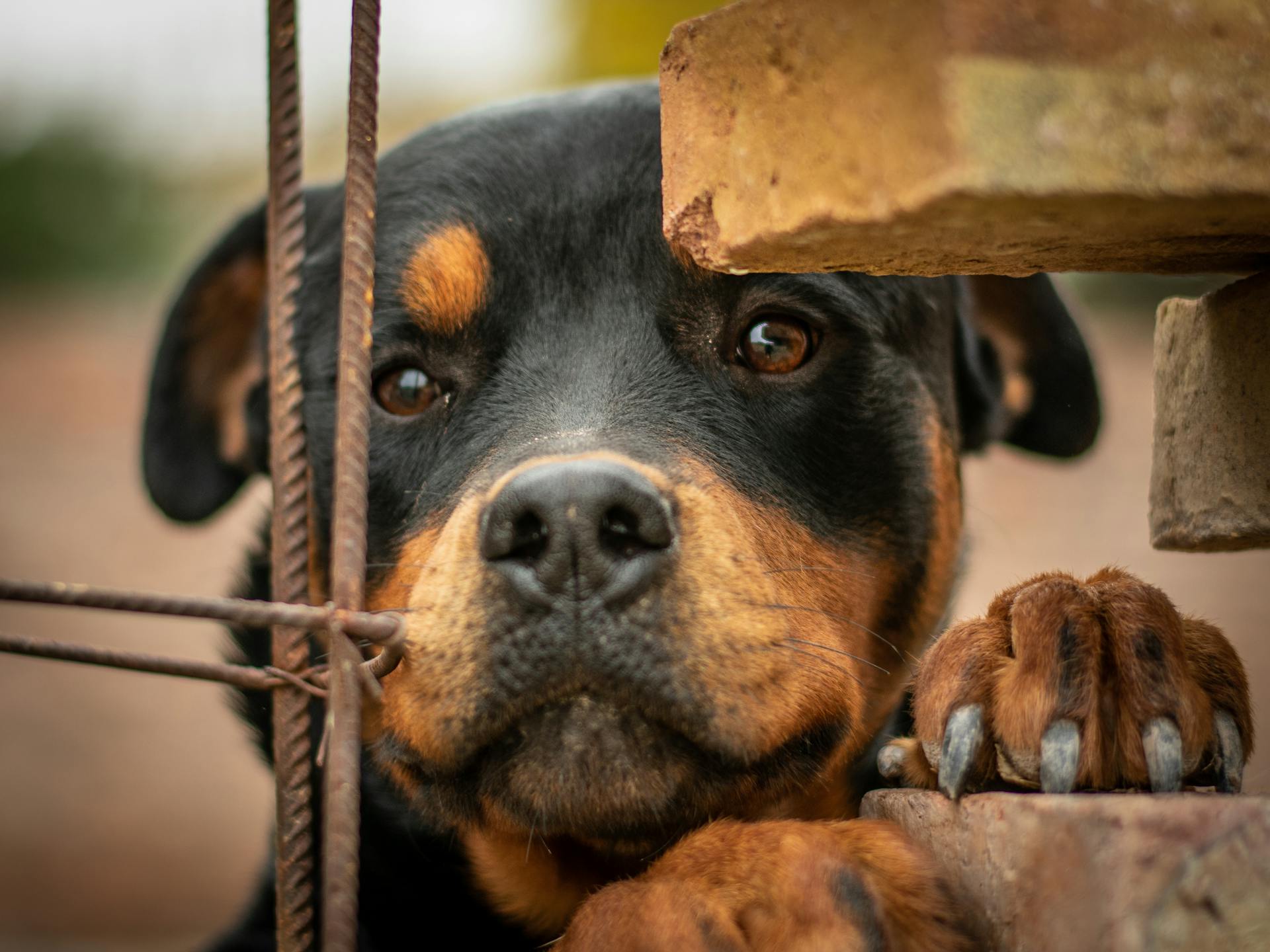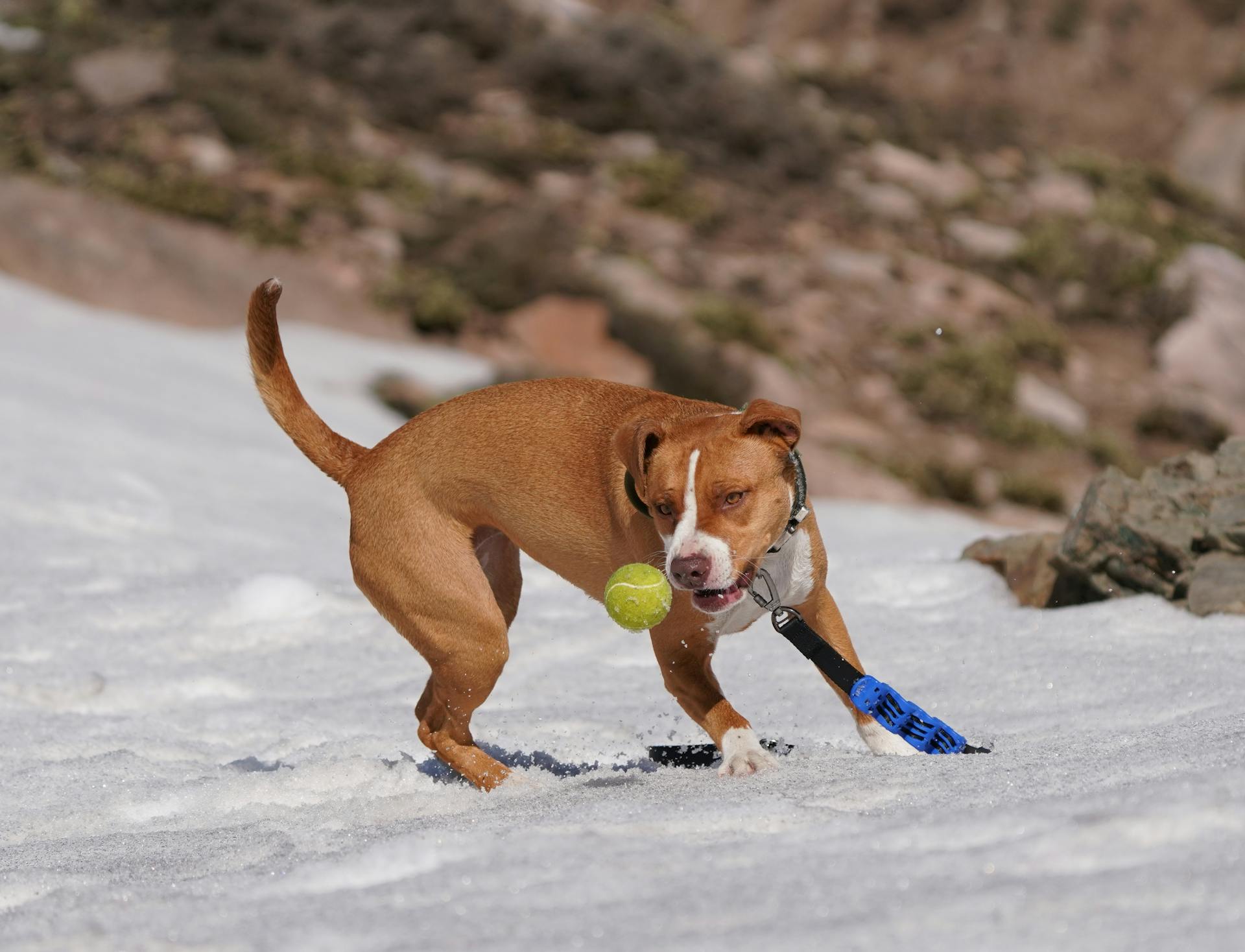
The American Pitbull Terrier is a breed that's often misunderstood, but with the right training, they can become loving and loyal companions. They thrive on positive reinforcement and clear boundaries.
To start training your American Pitbull Terrier, it's essential to establish a routine and be consistent in your approach. This breed excels in structured environments, so make sure to set aside dedicated time for training each day.
Positive reinforcement is key when training your American Pitbull Terrier. Rewarding good behavior with treats and praise encourages them to repeat the desired actions.
Start Early On
You can start training your Pit Bull as early as 8 weeks old. Puppies have a shorter attention span and will get tired easily, so keep training sessions short and sweet.
Start with basic commands like sit, stay, come and down; also teach your dog its name. Make training fun by playing games with your pet and rewarding it when it does something right.
Never discipline your dog if you're angry or frustrated; do so only when you're calm and assertive. This is crucial because Pit Bulls aren't difficult dogs, but they need to be taught that you are in charge and what behavior is acceptable and unacceptable.
Remember, puppies are like sponges and will absorb everything you teach them, so make sure you are consistent with your commands and rules. Consistency is key to successful training.
The Basics
The American Pit Bull Terrier is an intelligent breed that is eager to please its owner. They have a strong desire to learn and excel in various training activities.
Start with basic commands like sit, stay, come, and heel, as they will help you build a strong foundation for more advanced training.
Positive reinforcement techniques, such as treats or praise, are essential when teaching these commands to reward good behavior.
Consistency and patience are key when training your Pit Bull, especially at a young age. This helps build a strong bond between you and your dog, ensuring proper socialization and obedience.
Traditional training methods that involve leash corrections or punishment might not be as successful with Pit Bulls due to their muscular build and strength.
Remember, the use of clicker training or reward-based training has proven to be exceptionally effective in training Pit Bulls.
Consider reading: Feline Lymphoma When to Euthanize
Training
Pit Bulls aren't hard to train, but they do require consistency and a tailored approach.
You should start training your Pit Bull at a young age to build a strong bond and ensure proper socialization and obedience.
Training a Pit Bull puppy is easier than an older dog, but with patience and perseverance, even adult Pit Bulls can learn new skills and routines.
To train your Pit Bull successfully, use positive reinforcement techniques like clicker training or reward-based training.
Traditional training methods that involve leash corrections or punishment might not be as successful due to their muscular build and strength.
Consistency, patience, and a positive approach are key to training your Pit Bull.
You can start training your Pit Bull as early as 8 weeks old, but keep training sessions short and sweet.
Puppies have a shorter attention span and will get tired easily, so limit training sessions to 5-15 minutes.
Readers also liked: Yorkshire Terrier Potty Training
It's best not to train a Pit Bull on your own, as they can be stubborn and independent, so consider hiring a professional dog trainer.
A professional trainer can provide tips on handling different situations and offer additional training if needed.
Remember, never hit or scold your dog, as they don't respond well to violent methods of training.
Teach your Pit Bull basic commands like sit and stay, and reward them when they follow them.
Start with short training sessions and gradually increase their difficulty as time goes on.
Make training fun by playing games with your pet and rewarding them when they do something right.
Training Challenges
American Pitbull Terrier training can be a challenge, but don't worry, it's not impossible. Consistency and a positive approach are key to successful training.
Training a Pit Bull requires patience and perseverance, especially when starting with an older dog. It's essential to start at a young age, but with the right approach, even adult Pit Bulls can learn new skills and routines.
Some common issues that may arise during training include aggression, barking, and jumping. Aggression can be a sign of strong-willed behavior, and redirecting attention and rewarding good behavior can help address it. Excessive barking can be a sign of anxiety or boredom, and providing more mental and physical stimulation can help. Jumping is a sign of excitement, and ignoring the behavior and rewarding calm behavior can help.
Here are some common training challenges and how to address them:
- Aggression: Redirect attention and reward good behavior
- Barking: Provide more mental and physical stimulation
- Jumping: Ignore the behavior and reward calm behavior
Troubleshooting Common Issues
American Pit Bull Terriers are known to be strong-willed, which can lead to aggression towards other animals or people. This is why it's essential to address aggressive behavior immediately by redirecting their attention and rewarding good behavior.
Excessive barking can be a sign of anxiety or boredom, so it's crucial to identify the cause and address it. Providing your pup with more mental and physical stimulation can help alleviate this issue.
Jumping is a common issue in American Pit Bull Terriers, but it can be annoying. Ignoring your pup when they jump and rewarding them when they have all four paws on the ground is an effective way to address this behavior.
Here are some common issues that may arise during training, along with some practical solutions:
- Aggression: Redirect attention and reward good behavior
- Barking: Identify cause and provide more mental and physical stimulation
- Jumping: Ignore jumping and reward paws on the ground
Remember, every pup is different, and what works for one may not work for another. If you're struggling to train your American Pit Bull Terrier, consider consulting a professional for help.
Scolding Her Upon Arrival
Punishing your Pit Bull for not coming right away can actually make her less likely to respond to your calls in the future.
This is because she'll associate answering your call with punishment, not with good things like affection and treats.
If you scold her, she might think, "my human is calling; oh no! What is he going to do to me this time?" and delay responding to your call.
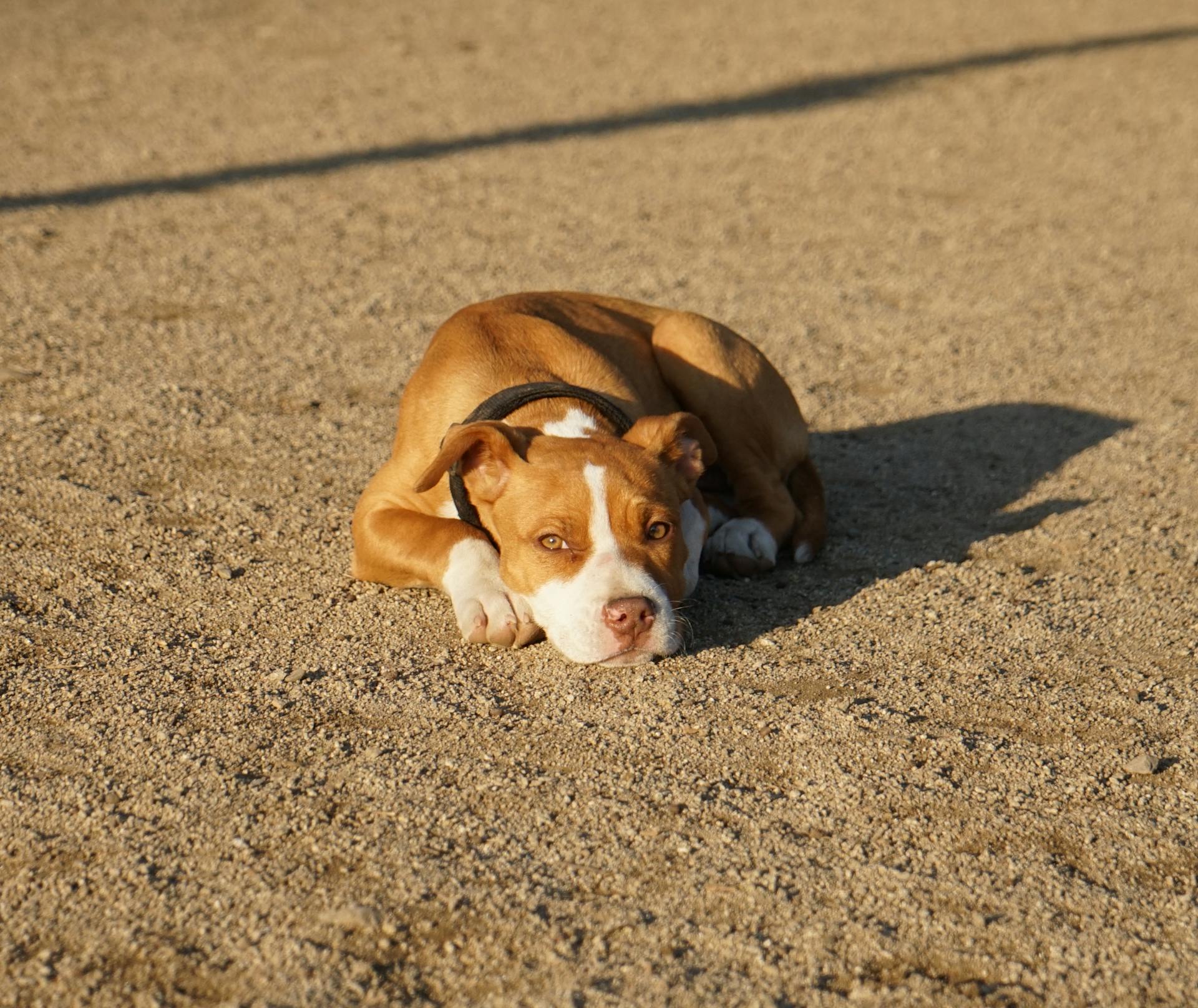
You want your dog to associate answering your call with positive reinforcement, not punishment.
In fact, the correct way to train your Pit Bull is to use positive reinforcement techniques, such as clicker training or reward-based training.
This approach has proven to be exceptionally effective, especially for Pit Bulls with their muscular build and strength.
Remember, consistency and patience are key when training your Pit Bull.
Training Difficulty
Training a Pit Bull can be a rewarding experience, but it's essential to understand that they can be stubborn and independent. This means that consistency, patience, and a positive approach are crucial for successful training.
Pit Bulls are not particularly hard to train compared to other breeds, but they do require a tailored approach that suits their specific needs and temperament. Starting training at a young age helps build a strong bond between you and your dog, ensuring proper socialization and obedience.
A professional dog trainer can make all the difference in training a Pit Bull, especially if you're new to dog ownership. They can provide tips on handling different situations and offer additional training if needed.
While some people may think it's impossible to train a Pit Bull due to their powerful jaws, this isn't true. With the right training and approach, your Pit Bull can become a well-behaved and happy family member.
Some common training issues that may arise with Pit Bulls include aggression, barking, and jumping. To address these issues, it's essential to redirect your dog's attention, provide mental and physical stimulation, and ignore undesirable behaviors.
Here are some common training issues and their solutions:
Remember, every dog is different, and what works for one Pit Bull may not work for another. If you're struggling to train your Pit Bull, it's a good idea to consult a professional for help.
Understanding the Breed
The American Pit Bull Terrier is a misunderstood breed with an unfair reputation. They're not naturally aggressive, despite popular belief.
Pit Bulls are extremely loyal to their family and very good with children. This breed is a great addition to families with kids.
Pit Bulls have a tendency to be reactive toward other animals due to their Terrier breeding history. They require a large amount of exercise and stimulation to keep them happy and healthy.
Their confident demeanor is bred into them, making them self-assured and reliable in various situations.
Misunderstood Breed
The American Pit Bull Terrier is a misunderstood breed, often characterized as violent and aggressive by the media. The name "Pit Bull" carries a certain stigma.
In reality, this breed is not naturally aggressive. Despite popular belief, the American Pit Bull Terrier is very good with children and extremely loyal to its family.
Their loyalty and affection towards family members are renowned traits. They form strong bonds with their owners and are often described as being highly devoted.
Bred to be courageous and determined, the American Pit Bull Terrier exhibits a confident demeanor. This confidence makes them self-assured and reliable in various situations.
Their confidence and courage can be channeled through training and socialization. When done properly, this breed becomes a loving and loyal companion.
Pit Bulls do have a tendency to be reactive toward other animals, due to their Terrier heritage. They require a large amount of exercise and stimulation to keep them happy and healthy.
Understanding the temperament of the American Pit Bull Terrier is essential for responsible ownership. It's crucial to recognize their needs and provide the necessary care and attention.
Expand your knowledge: American Pitbull Terrier Temperament Aggressive
Origins and Ancestry:
The American Pit Bull Terrier's origins are a fascinating tale. They originated from a mix of bulldog and terrier breeds in the British Isles during the 18th and 19th centuries.
These early dogs were initially developed for the brutal sport of bull-baiting, where they were pitted against bulls or other large animals. This practice was eventually outlawed, leading breeders to shift their focus to dog fighting.
To create a more agile and formidable fighter, breeders selectively crossed bulldogs with terriers, resulting in a breed known for its strength, tenacity, and gameness. This unique combination of traits would ultimately become a hallmark of the American Pit Bull Terrier.
As the breed evolved, it became clear that the American Pit Bull Terrier was more than just a fighting dog - it was a loyal and hardworking companion. Its versatility and willingness to please made it a popular choice among farmers, ranchers, and families.
A fresh viewpoint: American Hairless Terrier Breeder
Set Realistic Expectations
Training a Pit Bull takes time, so don't expect too much too soon. A Pit Bull isn't going to learn complex commands like sitting, rolling over, and playing dead immediately.
Give yourself at least two months before giving up on your dog's progress, especially if he's aggressive. This allows enough time for your dog to learn and adjust.
Remember, training shouldn't feel like work for either of you. Focus on what motivates your dog, like food or toys, to keep sessions engaging and fun.
Keep training sessions short to avoid boredom and frustration.
Frequently Asked Questions
What is the best way to discipline a pitbull?
Reward your pitbull with positive reinforcement, such as praise and treats, when they follow commands, rather than punishing them for mistakes. This approach helps earn their trust and reduces aggression
Sources
- https://pets.joinfluffy.com/pet-universe/post/dog/training/american-pit-bull-terrier-training
- https://pitbulls.org/article/5-most-common-training-mistakes
- https://www.animalbehaviorcollege.com/blog/pet-training/breed-spotlight-the-american-pit-bull-terrier/
- https://www.thepuppyacademy.com/blog/2022/1/10/a-guide-to-puppy-breeds-american-pit-bull-terrier
- https://suburban-k9.com/american-pit-bull-terrier/
Featured Images: pexels.com
